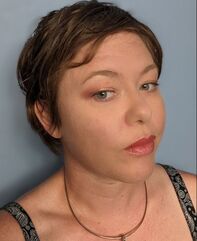| Pediatric movement disorders, such as cerebral palsy and dystonia, are key contributors to childhood disability. There are major gaps in understanding underlying molecular pathways and responsible brain regions, meaning treatment and prevention options are seriously limited. My research uses patient-based gene discovery, bioinformatics, and model studies to identify changes underlying pediatric movement disorders. The Kruer laboratory has been instrumental in demonstrating the contributions of genetic etiologies to cerebral palsy. We found causative genes and pathways that significantly overlap with other neurodevelopmental disorders including intellectual disability, autism, and epilepsy. I used Drosophila to screen several of these candidate genes and verified they are necessary for normal locomotor performance. We are building on these findings in projects to characterize disease-associated variants and the normal function of several novel genes. While studying dystonia-linked genes, I noticed similar defects in regulating eIF2α phosphorylation (eIF2α-P). This modification decreases protein translation to allow cells to recover from different types of stress. These initial observations led to an internal grant through Phoenix Children’s Hospital to develop an eIF2α-P genetic fly model that has locomotor impairments and dystonia-like movements. I am using the robust genetic toolkit of the fly model to identify whether changes to neuronal activity or synaptic connectivity contribute to dystonia and what cell types may contribute to hyperkinetic movements. To do this, I am utilizing studies of animal movements, biochemical changes, and anatomical and functional imaging. I am also involved in several clinical projects. My mentor, Dr. Kruer, and I consult on efforts to identify novel treatment options for patients with ultra-rare conditions. I am leading a project for applying cerebral palsy genetic sequencing to clinical settings and building support for its implementation. I’ve contributed to writing reviews and position statements for reconciling genetic etiologies as a cause of cerebral palsy. My research on the cellular and molecular mechanisms of movement disorders are designed to support development of pharmaceutical and surgical interventions for treating these childhood disabilities. This efforts support my long-term goal to become a translational researcher in order to bridge the gaps needed for improving patient outcomes using research and advocacy. |
|
0 Comments
|
SpotlightEach month we'll feature a Postdoctoral Scholar and their research, sharing their experiences from the UA, life in Arizona and their research interests. Archives
November 2022
Categories |

 RSS Feed
RSS Feed
